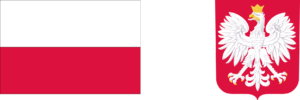Lithuania is preparing for a major military spending surge. Prime Minister Inga Ruginienė announced that her government will allocate 5.38% of GDP to defense in 2026, marking the highest defense-to-GDP ratio in NATO. The move would push Lithuania ahead of Poland in relative spending, even though the total sum remains far smaller.
“We should not view defense solely through the lens of buying weapons. There are many other aspects that are crucial during wartime,” Prime Minister Ruginienė told reporters. “When you buy a tank, you must also be able to move it in times of war.”
Historic Increase in Military Spending
The Lithuanian government plans to spend €4.8 billion (about 20 billion PLN) on defense next year — a record amount for the small Baltic nation. By comparison, Poland’s 2026 defense budget is projected to reach around 200 billion PLN, ten times larger in absolute terms.
Under NATO’s new strategic guidelines, member states are expected to aim for 5% of GDP in defense spending by 2035, with 3.5% dedicated to armaments and 1.5% to supporting infrastructure, such as roads, logistics, and military facilities.
Finance Minister Kristupas Vaitiekūnas confirmed that a significant portion of Lithuania’s defense budget will go toward building and modernizing transport routes to facilitate troop and equipment movements, particularly to military training areas.
Political Controversy Over Spending Transparency
The opposition has raised concerns about the transparency of the government’s accounting methods. Laurynas Kasčiūnas, leader of the Homeland Union – Lithuanian Christian Democrats, warned that some infrastructure projects might be misclassified as defense expenditures to inflate the official figures.
“We’ll see everything once the detailed national defense budget is published,” Kasčiūnas said. “Only then will we know whether there is manipulation or not.”
Despite the criticism, Ruginienė’s government insists the record spending is essential amid growing regional insecurity and continued Russian aggression in Ukraine. With its latest move, Lithuania aims not only to strengthen its national defense but also to set an example of determination and preparedness within NATO’s eastern flank.






